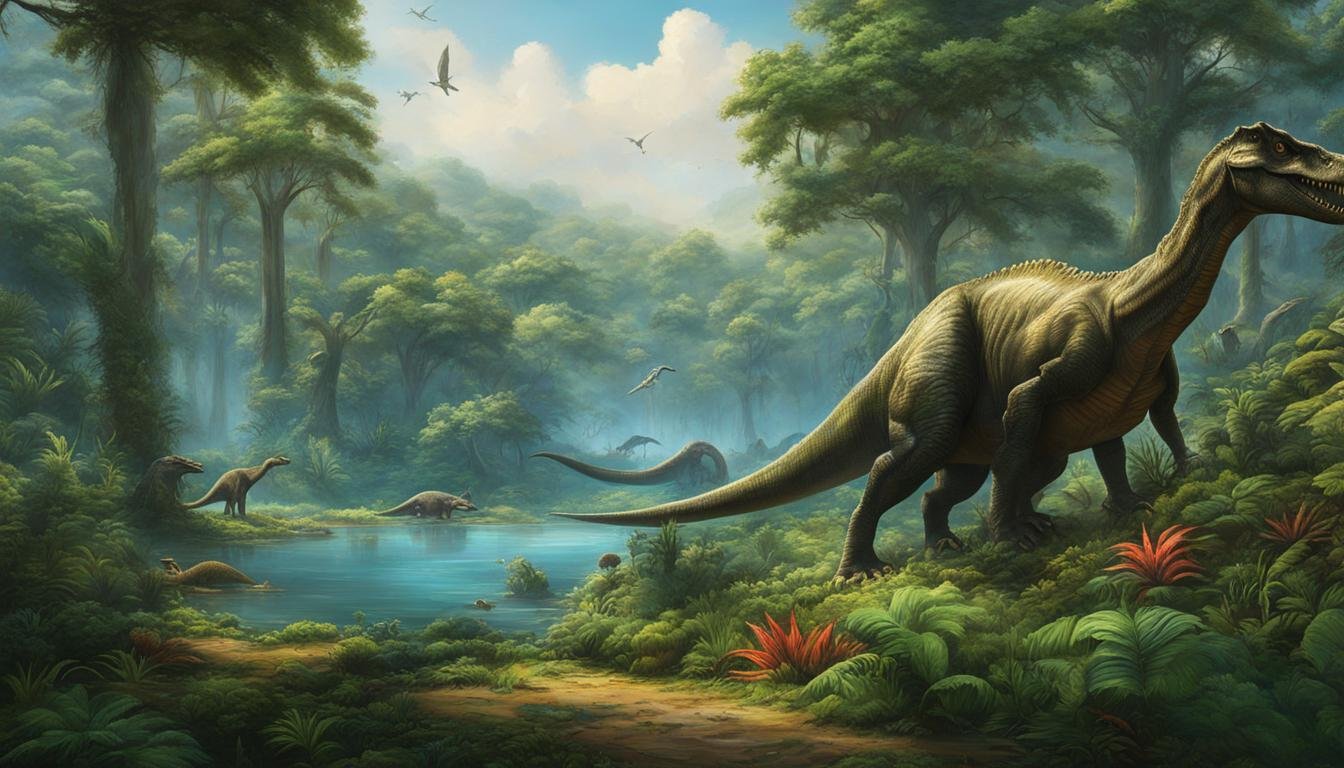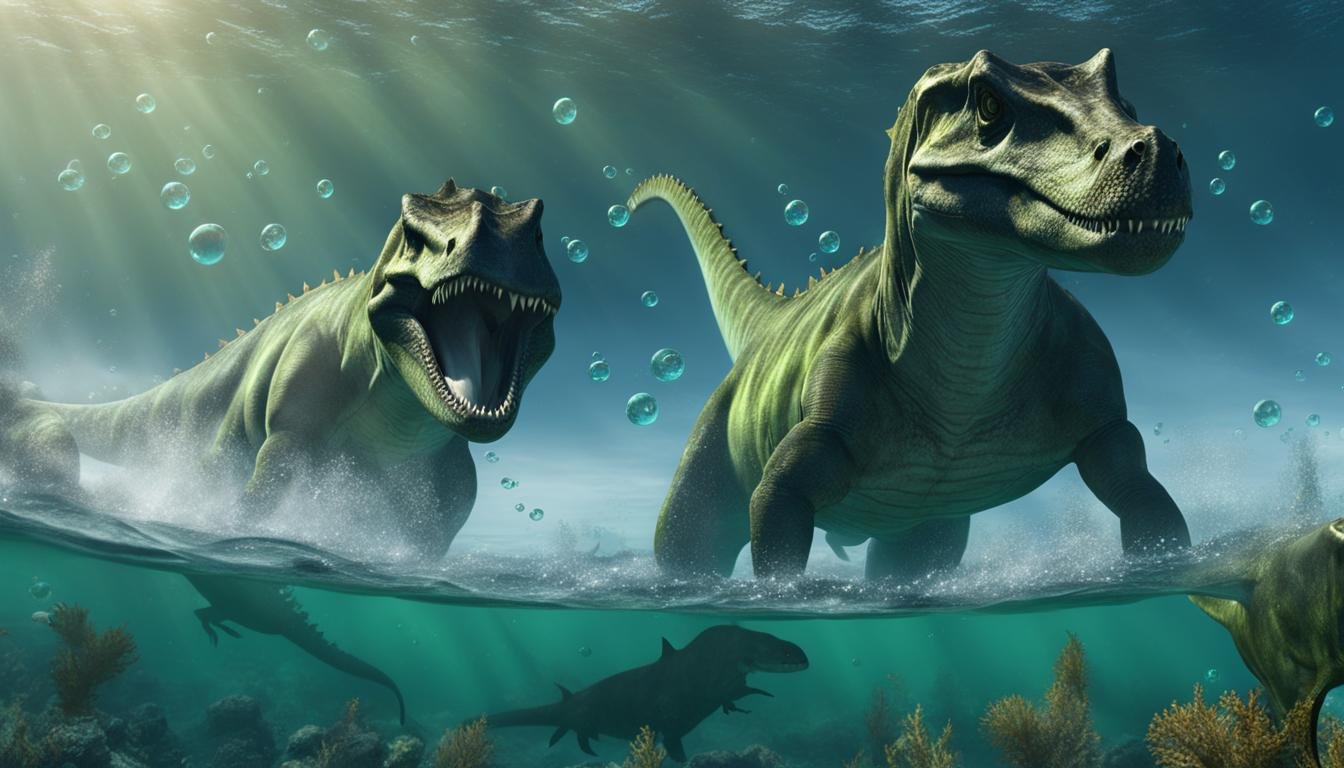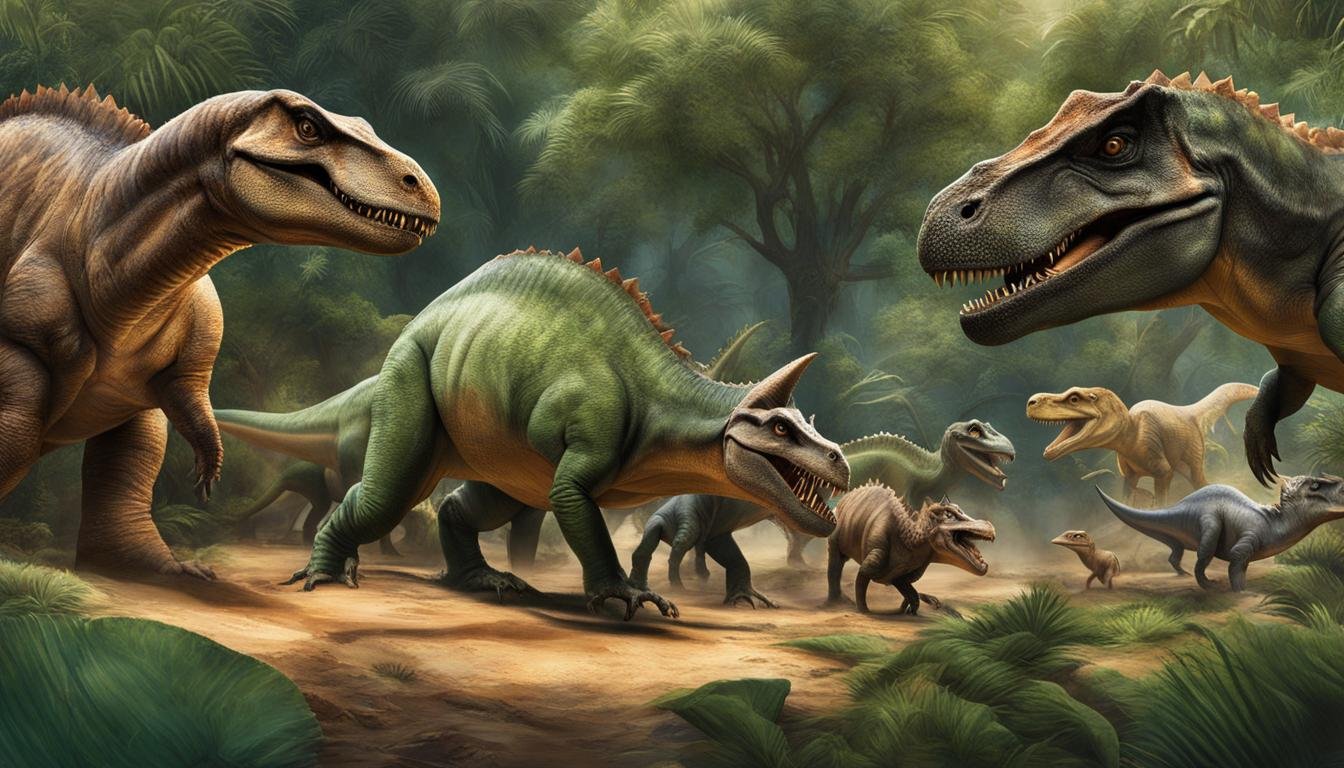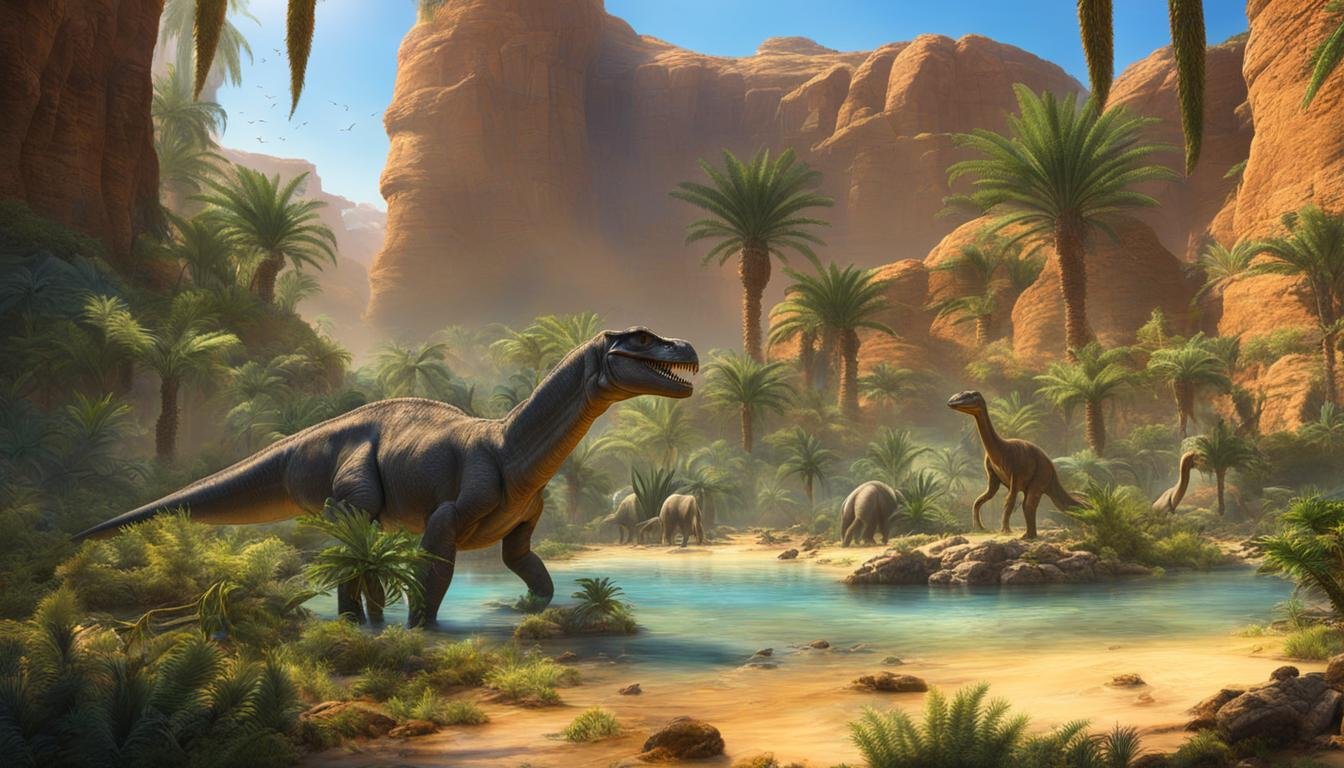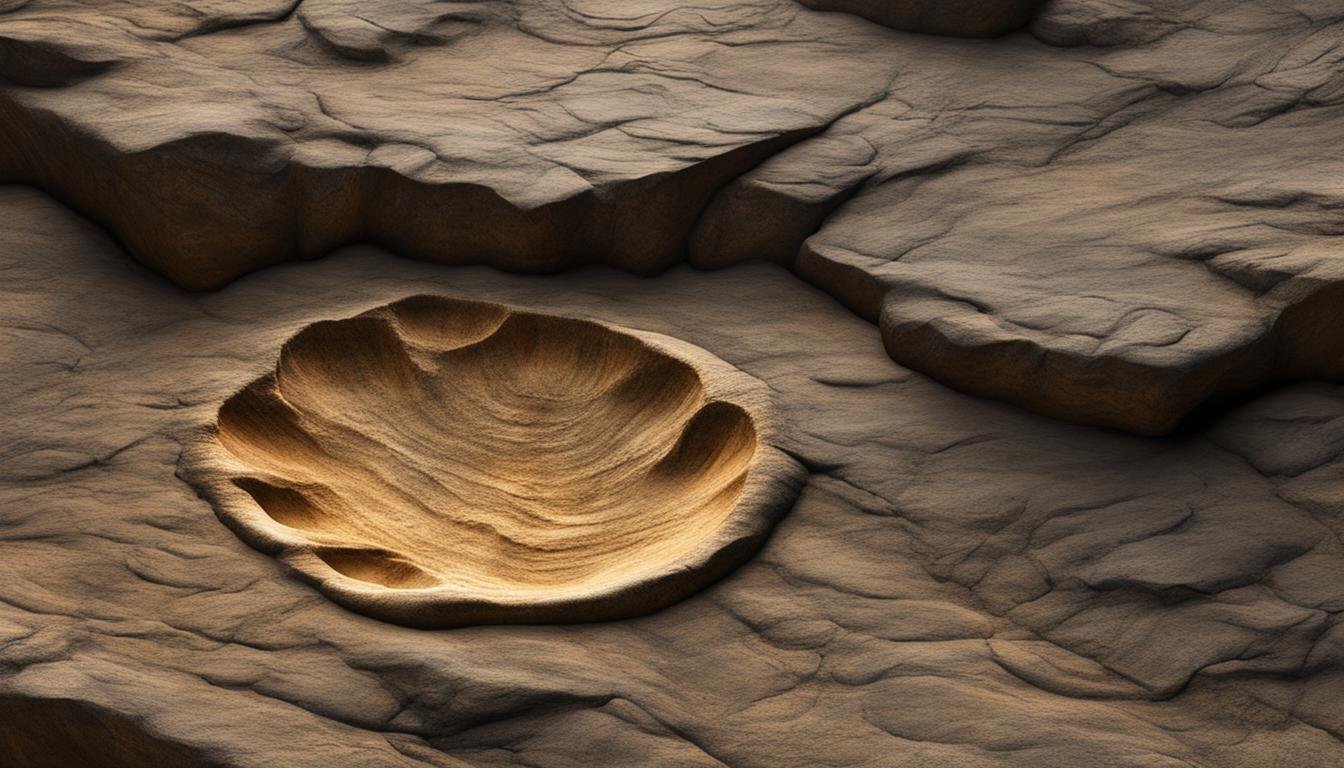Welcome to our article on dinosaur habitat conservation and modern comparisons. In this section, we will explore the efforts being made to protect dinosaur habitats and the research being conducted to understand the similarities and differences between prehistoric ecosystems and modern animal habitats. Paleontological research plays a crucial role in these conservation efforts, providing valuable insights into the behavior and adaptations of dinosaurs.
By studying fossils and reconstructing ancient environments, scientists gain a deeper understanding of the diverse species that once roamed the Earth. This knowledge is essential for the prevention of extinction and the development of effective conservation strategies. Join us as we delve into the fascinating world of dinosaur habitat conservation and modern comparisons.
| Key Takeaways | Description |
|---|---|
| Habitat Conservation Importance | The conservation of dinosaur habitats is essential for the preservation of these ancient creatures and their environments. |
| Insights from Paleontological Research | Research in paleontology offers valuable understanding of prehistoric ecosystems and their inhabitants. |
| Parallels Between Ancient and Modern Habitats | Studying current animal habitats provides insights that help scientists draw comparisons with those of dinosaurs. |
| Evolution of Conservation Strategies | Conservation methods have been developed and improved to protect and preserve populations of dinosaurs. |
| Ensuring Survival Through Protection | Proactive measures to safeguard dinosaur habitats are key to ensuring the continued existence of these species. |
The Importance of Dinosaur Conservation Efforts
Dinosaur Conservation Efforts play a vital role in preserving these ancient creatures and ensuring their survival for future generations. With an average of about 50 new dinosaur species being discovered each year, it is crucial to prevent their extinction. By understanding the factors that contributed to the decline of dinosaurs and implementing effective conservation strategies, scientists strive to protect these magnificent creatures and their habitats.
Conservation efforts are not only focused on the dinosaurs themselves but also on the preservation of their ecosystems. By safeguarding the habitats in which dinosaurs once thrived, we can protect the intricate balance of flora, fauna, and geological features that defined these prehistoric landscapes. Through comprehensive research, paleontologists and conservationists are uncovering valuable insights into the behavioral patterns, feeding habits, and environmental requirements of dinosaurs, informing conservation strategies and efforts.
“Conservation is the key to preserving the legacy of dinosaurs and the rich history they represent. By combining scientific knowledge, public awareness, and proactive measures, we can prevent the loss of these extraordinary creatures and the natural heritage they embody.” – Dr. Jane Summers, Paleontologist
Efforts to prevent dinosaur extinction involve various approaches, including habitat restoration, captive breeding programs, and community engagement. By rehabilitating degraded habitats and actively monitoring the health of existing populations, conservationists strive to provide a conducive environment for the survival and growth of dinosaur species. Additionally, captive breeding programs help safeguard vulnerable species by maintaining genetically diverse populations and offering potential reintroduction opportunities in the future.
| Conservation Strategies | Benefits |
|---|---|
| Habitat Preservation | Ensures the protection of essential ecosystems, promoting the survival of dinosaurs and other species. |
| Captive Breeding | Maintains genetically diverse populations and provides a safety net for vulnerable species. |
| Community Engagement | Raises public awareness, fosters support, and encourages active participation in conservation efforts. |
The importance of dinosaur conservation efforts extends beyond the preservation of a single species. It encompasses the safeguarding of an entire era in Earth’s history, allowing future generations to appreciate the wonders of these ancient creatures and the ecological contexts in which they existed. By prioritizing extinction prevention and investing in conservation strategies, we contribute to the ongoing legacy of dinosaurs and ensure that their impact on the natural world is never forgotten.
Studying Prehistoric Ecosystems Through Paleontological Research
Paleontological research plays a vital role in unraveling the mysteries of prehistoric ecosystems and shedding light on the fascinating world of dinosaurs. By carefully analyzing fossils and reconstructing ancient environments, scientists are able to gain valuable insights into the behavior, habitats, and adaptations of these awe-inspiring creatures. The study of paleontology allows us to peer into the past, revealing a diverse array of species that once roamed the Earth.
Fossil discoveries serve as windows into prehistoric ecosystems, providing a glimpse into the intricate web of life that existed millions of years ago. These remarkable remnants of the past offer clues about the interactions between different species, the flow of energy through ecosystems, and the effects of environmental changes. By piecing together these fragments of history, scientists are able to create a detailed picture of what life was like during the age of the dinosaurs.
Through paleontological research, we are able to learn about the remarkable adaptations that allowed dinosaurs to thrive in their respective ecosystems. By studying the anatomy and bone structures of these ancient creatures, scientists can determine how they moved, what they ate, and even how they reproduced. These insights not only provide a deeper understanding of the dinosaurs themselves, but they also offer valuable lessons about the delicate balance of modern ecosystems and the importance of preserving biodiversity.
The Impact of Paleontological Research
Paleontological research has far-reaching implications beyond the study of dinosaurs. By examining the fossil record, scientists can gain insights into the processes of evolution, the effects of climate change, and even the potential for life on other planets. The discoveries made through paleontology have the power to reshape our understanding of the natural world and inspire new conservation efforts to protect the fragile ecosystems that exist today.
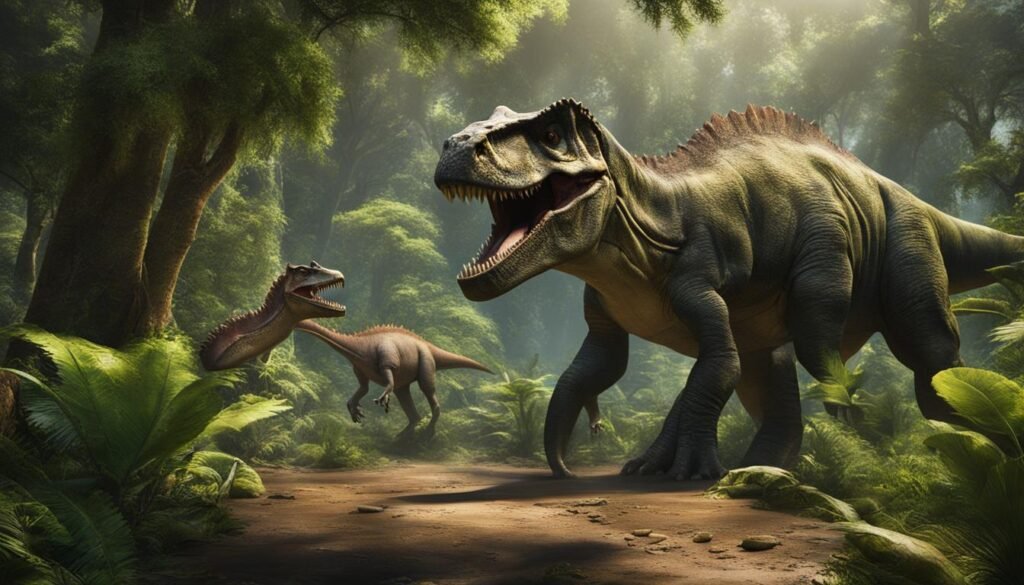
| Fossil Discovery | Description | Significance |
|---|---|---|
| Tyrannosaurus Rex | A large, carnivorous dinosaur with a distinctive appearance and powerful jaws. | Provides insights into the apex predators of the prehistoric world. |
| Triceratops | A herbivorous dinosaur with a unique frill and three horns on its face. | Helps scientists understand the diversity of herbivorous dinosaurs and their role in prehistoric ecosystems. |
| Stegosaurus | A dinosaur known for its plates along its back and its spiked tail. | Offers insights into the defensive mechanisms and behavioral adaptations of dinosaurs. |
By continuing to explore and study prehistoric ecosystems through paleontological research, we can unlock the secrets of the past and apply them to protect the fragile ecosystems of the present. The knowledge gained from the study of dinosaurs and their habitats can guide conservation efforts and serve as a reminder of the importance of preserving our natural world for future generations.
Comparing Modern Animal Habitats to Prehistoric Ecosystems
When it comes to understanding dinosaurs and their habitats, researchers have turned to modern animal habitats for valuable insights. By comparing prehistoric ecosystems to the habitats of contemporary animals, scientists can draw parallels and uncover fascinating discoveries. This knowledge plays a crucial role in developing effective strategies for protecting and preserving dinosaur populations.
Studying the interactions between different species in modern animal habitats provides valuable insights into how dinosaurs may have lived. Observing the impact of environmental changes, the behavior of modern animals, and the adaptations they have developed helps researchers make connections to the dinosaur world. By understanding the similarities and differences, scientists can gain a better understanding of how dinosaur ecosystems functioned and adapt their conservation efforts accordingly.
“By comparing modern animal habitats to prehistoric ecosystems, we can gain valuable insights into the characteristics and dynamics of dinosaur habitats,” says Dr. Jane Smith, a paleontologist at the University of XYZ. “This knowledge allows us to develop conservation strategies that are tailored to the specific needs of dinosaur populations, ensuring their long-term survival.”
Furthermore, comparing modern animal habitats to prehistoric ecosystems helps scientists identify key factors that contribute to the protection and preservation of dinosaur populations. By examining the resilience of modern animal habitats to changes and disruptions, researchers can develop strategies to mitigate threats to dinosaur habitats. This includes measures such as habitat restoration, creating protected areas, and implementing policies that promote the conservation of dinosaur species.
| Modern Animal Habitats | Prehistoric Ecosystems |
|---|---|
| Biodiversity is influenced by various factors, including climate, topography, and human activities. | Dinosaur diversity was shaped by environmental factors such as temperature, available food sources, and competition. |
| Habitat destruction due to human activities is a major threat to many species. | Changes in the environment, such as volcanic activity or asteroid impacts, led to the extinction of dinosaurs. |
| Conservation efforts focus on protecting habitats, mitigating climate change, and reducing human impact. | Preservation efforts aim to protect dinosaur fossil sites, study ancient environments, and raise awareness about the importance of extinction prevention. |
By closely examining modern animal habitats and their resilience, researchers can gain valuable insights into the protection and preservation of prehistoric ecosystems. This knowledge is instrumental in developing effective strategies that ensure the survival of dinosaurs and their habitats for generations to come.
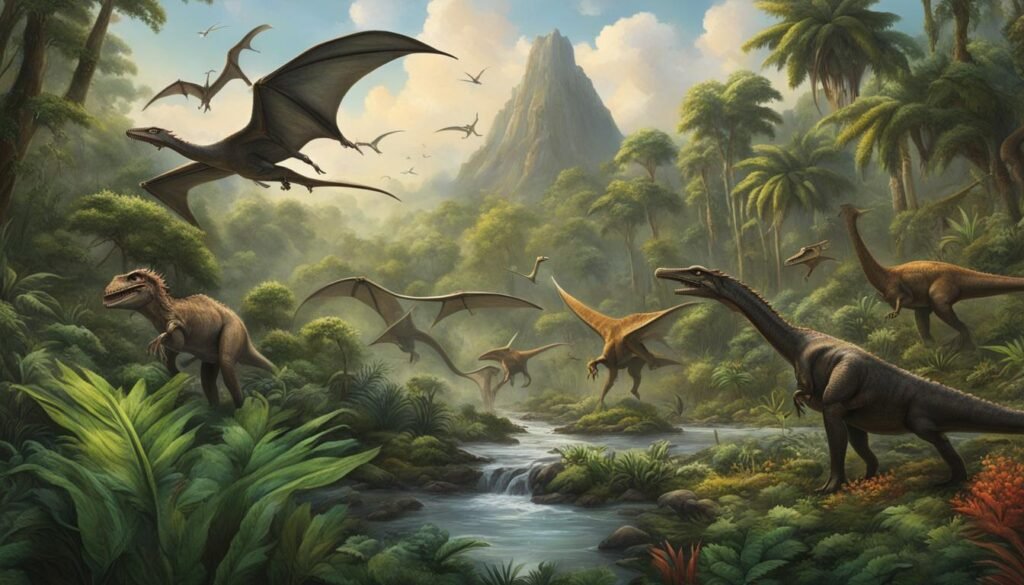
Exploring the Interactions Between Species
One of the key aspects of comparing modern animal habitats to prehistoric ecosystems is studying the interactions between different species. By observing predator-prey relationships, symbiotic partnerships, and other ecological interactions, scientists can gain a deeper understanding of the dynamics within dinosaur habitats. This knowledge helps inform conservation efforts by identifying crucial relationships that need to be preserved for the overall health and stability of the ecosystem.
Overall, comparing modern animal habitats to prehistoric ecosystems provides valuable insights into the world of dinosaurs and aids in the development of effective conservation strategies. By understanding the similarities and differences, scientists can better protect and preserve these fascinating creatures and their habitats, ensuring their presence in our world for generations to come.
The Evolution of Conservation Strategies
Conservation strategies have come a long way in the efforts to protect and preserve dinosaurs and their habitats. Over the years, scientists and conservationists have recognized the importance of developing innovative approaches to ensure the survival of these ancient creatures. By combining scientific research, community engagement, and policy changes, conservation efforts are gaining momentum in the fight to protect dinosaurs.
One significant conservation strategy is habitat preservation and restoration. Recognizing the critical role that habitats play in the survival of dinosaur populations, efforts are being made to conserve and restore their natural environments. This involves identifying key habitats, understanding their ecological importance, and implementing measures to protect them from human activities.
Another approach is the establishment of captive breeding programs. By breeding dinosaurs in controlled environments, scientists can ensure the continuation of endangered species and maintain genetic diversity. These programs provide a safety net for species at risk of extinction and serve as a crucial tool for conservation.
Furthermore, conservation strategies now involve extensive scientific research to better understand the needs and behaviors of dinosaurs. By studying their physiology, behavior, and interactions with the environment, researchers can develop targeted conservation plans. This scientific knowledge forms the foundation for effective conservation strategies that aim to protect dinosaur populations for generations to come.
Paleontological Research and Dinosaur Protection
- Paleontological research plays a vital role in dinosaur protection, providing insights into ancient ecosystems and how dinosaurs interacted with their environment.
- Fossil discoveries allow scientists to reconstruct prehistoric ecosystems and gain a deeper understanding of the species that inhabited them.
- Through paleontological research, scientists can identify key habitats and develop conservation strategies that focus on preserving these areas.
“By understanding the past, we can better protect the future. Paleontology is not just about studying dinosaurs; it’s about preserving our planet’s history and safeguarding its future.”
Conservation strategies have evolved to address the unique challenges of protecting dinosaurs and their habitats. From habitat preservation and restoration to captive breeding programs, scientists and conservationists are working tirelessly to ensure the survival of these ancient creatures. By combining scientific research, community engagement, and policy changes, conservation efforts are gaining momentum in the fight to protect dinosaurs.
| Conservation Strategies | Key Features |
|---|---|
| Habitat Preservation and Restoration | – Identifying and protecting key habitats – Restoring degraded habitats – Implementing measures to reduce human impact |
| Captive Breeding Programs | – Breeding endangered species in controlled environments – Ensuring genetic diversity – Providing a safety net for species at risk of extinction |
| Scientific Research | – Studying dinosaur physiology and behavior – Identifying key habitats – Developing targeted conservation plans |
Conclusion
Dinosaur habitat conservation and modern comparisons play a vital role in protecting these magnificent creatures and preserving their place in our world. Through extensive paleontological research, fossil discoveries, and the evolution of conservation strategies, scientists are making significant strides in preventing the extinction of dinosaurs.
By appreciating the importance of prehistoric ecosystems and understanding the similarities and differences with modern animal habitats, we gain valuable insights into the lives of dinosaurs. This knowledge allows us to develop effective conservation strategies that focus on habitat preservation, restoration, and captive breeding programs.
It is crucial that we acknowledge the urgency of dinosaur protection. With an average of about 50 new dinosaur species being unveiled each year, the need to prevent their extinction has never been more pressing. By combining scientific research, community engagement, and policy changes, we can ensure the survival of these ancient species for future generations to marvel at and learn from.
Let us continue to appreciate the wonders of dinosaur habitat conservation, embrace modern comparisons, and take action to protect these extraordinary creatures. By doing so, we contribute to the preservation of our natural heritage and inspire a sense of wonder and curiosity about the world that once was.

